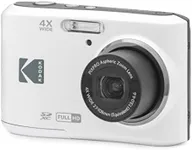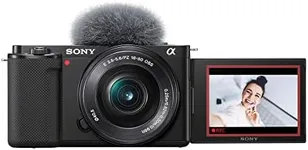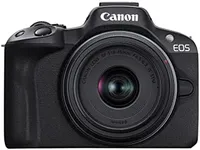Buying Guide for the Best Photo Camera For Beginners
Choosing your first photo camera can feel overwhelming, but it’s all about finding a model that matches your interests and comfort level. As a beginner, you want a camera that’s easy to use, helps you learn, and grows with your skills. Focus on features that make photography enjoyable and accessible, rather than chasing the highest specs. Think about what you want to photograph—like people, landscapes, or action—and let that guide your choices. Remember, the best camera is the one you’ll enjoy using and can carry with you.Sensor SizeThe sensor is the part of the camera that captures light and creates your photo. Sensor size affects image quality, low-light performance, and how much background blur you can get. The main types are full-frame, APS-C, and Micro Four Thirds. Full-frame sensors are larger and capture more detail, but cameras with these sensors are usually bigger and heavier. APS-C sensors are a popular middle ground, offering good quality in a more compact body. Micro Four Thirds sensors are smaller, making cameras lighter and more portable, but with slightly less image quality in low light. For beginners, APS-C or Micro Four Thirds are often a great balance between quality and ease of use.
MegapixelsMegapixels tell you how many millions of pixels the camera uses to make a photo. More megapixels mean you can print larger photos or crop images without losing detail. However, for most beginners, anything above 12 megapixels is more than enough for everyday use, sharing online, or making standard prints. Don’t get too caught up in chasing the highest number—focus on other features that matter more for learning and enjoyment.
Ease of UseEase of use covers how simple the camera is to operate, including its menu system, button layout, and whether it has helpful features like guided modes or tutorials. Some cameras are designed with beginners in mind, offering automatic settings and on-screen tips. If you’re new to photography, look for a camera that feels comfortable in your hands and doesn’t overwhelm you with complicated controls. This will help you learn faster and have more fun.
Autofocus SystemThe autofocus system helps the camera quickly and accurately focus on your subject. A good autofocus system is important for capturing sharp photos, especially of moving subjects like kids or pets. Some cameras have more focus points or advanced tracking features, which can be helpful if you plan to shoot action or wildlife. For general use, a basic but reliable autofocus system is usually enough, but if you want to photograph sports or fast-moving scenes, look for a camera with faster and more flexible autofocus.
Interchangeable LensesSome cameras let you change lenses, while others have a fixed lens. Interchangeable lens cameras (like DSLRs and mirrorless cameras) give you more creative options as you grow, letting you choose lenses for portraits, landscapes, or close-ups. Fixed lens cameras are simpler and lighter, which can be great for travel or everyday snapshots. If you want to explore different types of photography, consider a camera with interchangeable lenses. If you prefer simplicity, a fixed lens camera might be a better fit.
Size and WeightThe size and weight of a camera affect how easy it is to carry around. Larger cameras can be more comfortable to hold and may offer more features, but they can be heavy and bulky. Smaller cameras are easier to take everywhere, making it more likely you’ll use them often. Think about when and where you’ll use your camera most—if you want something for travel or daily use, a lighter, more compact camera is usually best.
ConnectivityConnectivity features like Wi-Fi or Bluetooth let you quickly transfer photos to your phone or computer, or even control the camera remotely. This is handy if you want to share your photos on social media or back them up easily. If you value convenience and sharing, look for a camera with built-in wireless features.



















